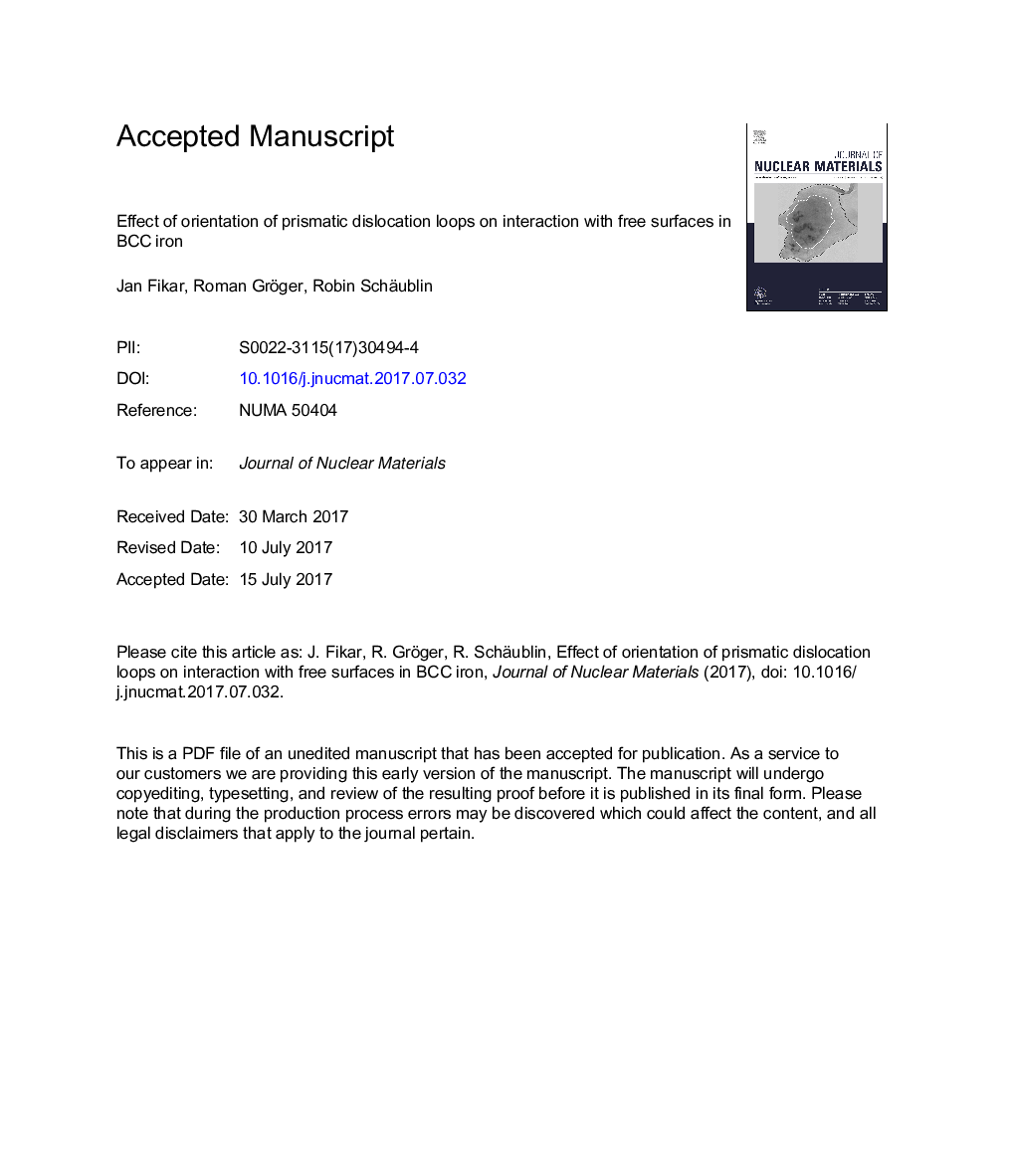| Article ID | Journal | Published Year | Pages | File Type |
|---|---|---|---|---|
| 7963625 | Journal of Nuclear Materials | 2017 | 10 Pages |
Abstract
The prismatic loops appear in metals as a result of high-energy irradiation. Understanding their formation and interaction is important for quantification of irradiation-induced deterioration of mechanical properties. Characterization of dislocation loops in thin foils is commonly made using transmission electron microscopy (TEM), but the results are inevitably influenced by the proximity of free surfaces. The prismatic loops are attracted to free surfaces by image forces. Depending on the type, shape, size, orientation and depth of the loop in the foil, they can escape to the free surface creating denuded loop-free zones and thus invalidating TEM observations. In our previous studies we described a simple general method to determine the critical depth and the critical stress to move prismatic dislocation loops. The critical depths can be further used to correct measurements of the loop density by TEM. Here, we use this procedure to compare ã100ã loops and 12ã111ã loops in body-centered cubic (BCC) iron. The influences of the interatomic potential and the loop orientation are studied in detail. The difference between interstitial and vacancy type loop is also investigated.
Related Topics
Physical Sciences and Engineering
Energy
Nuclear Energy and Engineering
Authors
Jan Fikar, Roman Gröger, Robin Schäublin,
